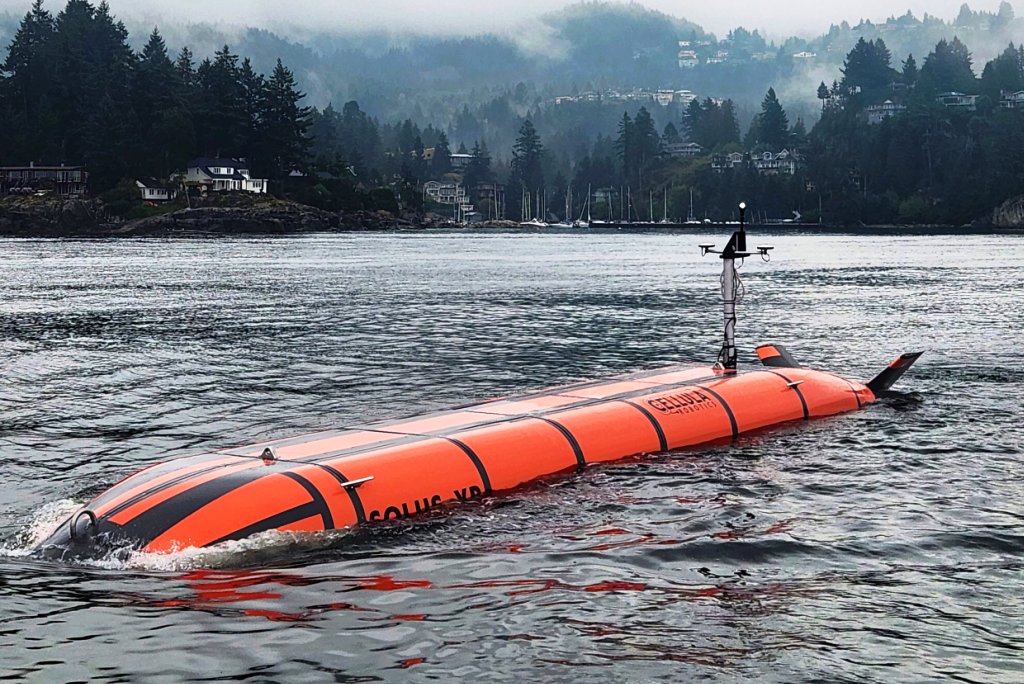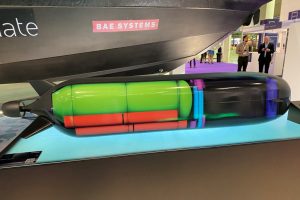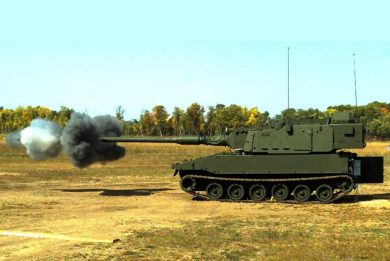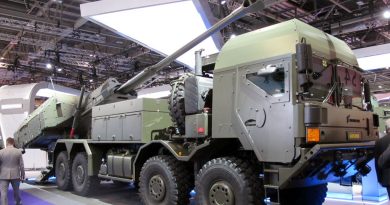
DSEI 2023 – BAE Systems will demonstrate XLAUV technology with Cellula Robotics in Q3 2024
BAE Systems has teamed with Canadian marine technology and subsea robotics Cellula Robotics company to fast-track the development and demonstration of a new Extra Large Autonomous Underwater Vehicle (XLAUV) technological demonstrator and trial it at sea in the third quarter 2024
“We are collaborating with Cellula Robotics to conduct a demonstration of Herne XLAUV by September 2024. This fast-paced demonstration will showcase our advanced autonomous behaviours in an Intelligence, Surveillance and Reconnaissance (ISR) scenario. It will be the first of a range of capabilities we will be demonstrating and will be a key step on our drive to provide a trusted militarised capability that delivers the persistence and flexibility that navies need for the future,” Scott Jamieson, Managing Director of Maritime Services at BAE Systems said at DSEI 2023.
“Herne will provide a capability built on BAE Systems’ deep understanding of its military customers requirements to deliver the persistence and flexibility needed for the future. Its adaptable design will allow the platform to be configured to conduct operations including: anti-submarine warfare; intelligence, surveillance and reconnaissance, and electronic warfare,” highlighted the BAE Systems representative adding that “customers across the world are calling out for this technology and our aim is to create an autonomous underwater vehicle that is faster to market and provides navies with the capability and flexibility they need to defend critical infrastructure”.

The demonstration programme, will test the ‘brains’ of the BAE Systems military XLAUV technology package concept first unveiled during Euronaval 2022 on one of Cellula Robotics’ underwater vehicles in trials set to take place on September 2024 at a facility on the south coast of England.
“We will fast-track the development of a technological demonstrator matching our Herne autonomous underwater operations capability package with the latest Cellula Robotics underwater vehicle and trial it initially in an intelligence gathering, surveillance and reconnaissance scenario,” highlighted Tom O’Neill, business development, BAE Systems Maritime Underwater.
BAE Systems will add the Herne technology and ISR payload package to the Cellula Robotics Solus-XR XLAUV, leveraging the company’s experience in payload integration, sensors, mission planning, electronics architecture and platform integration.
The Cellula Robotics’ Solus-XR XLAUV features a 12 meters long and a 1.7×1.7 meters cross-section platform that can be transported in a standard ISO 40’ container, allowing it to be deployed from port facilities and removing the necessity for auxiliary support vessels. According to Cellula Robotics, the Solus-XR is equipped with deployable thrusters and dual buoyancy engines providing hovering capabilities. With a retracting communication mast, it has forward and aft 2,500 litres payload bays that can be mission module reconfigured for a range of operations including ASW, ISR and Rapid Environmental Assessment (REA) with winch-deployed thin line towed arrays, Li-Ion batteries to increase sprint endurance, deployable and non-deployable mission-customised payloads, and seafloor suction anchor.
“The initial ISR configuration will be focused mainly on a mission package including electro-optical and electronic surveillance and communications systems that will be managed by an autonomous operation mission brain with artificial intelligence (AI),” Tom O’Neill highlighted. Extended ranges will be initially provided by Li-Ion batteries ensuring an intended 7-to-10 days mission endurance, EDR On-Line understood. However BAE Systems and Cellula Robotics are looking at longer ranges thanks to hydrogen Fuel Cell and other undisclosed propulsion packages.
Having been launched as a project in early 2023 and initiated sea trials last August off the shores of West Vancouver (BC), Solus-XR is Cellula’s next generation, fuel cell powered XLAUV, designed for port-to-port, lightly supervised surveillance missions over long ranges. According to Cellula Robotics product brochure, with the redundant hydrogen fuel cells it will have a submerged range of over 5,000 nautical miles at 3 knots. Solus-XR is designed to be deployed solo or in fleets to provide a persistent at-sea capability with inter-vehicle communications and adaptive missions.
Last August, Cellula Robotics announced it was selected as one of the 26 suppliers to be awarded a contract for the prestigious (UK MoD) CHARYBDIS Phase 1 project. Spearheaded by the Submarine Delivery Agency Autonomy Unit (SDA-AU) on behalf of Navy Develop, this venture seeks to commission an array of concept studies from diverse and credible suppliers. The overarching goal is to achieve integrated uncrewed, persistent, deployable Anti-Submarine Warfare (ASW) Surveillance systems.
Photos courtesy BAE Systems and L. Peruzzi



